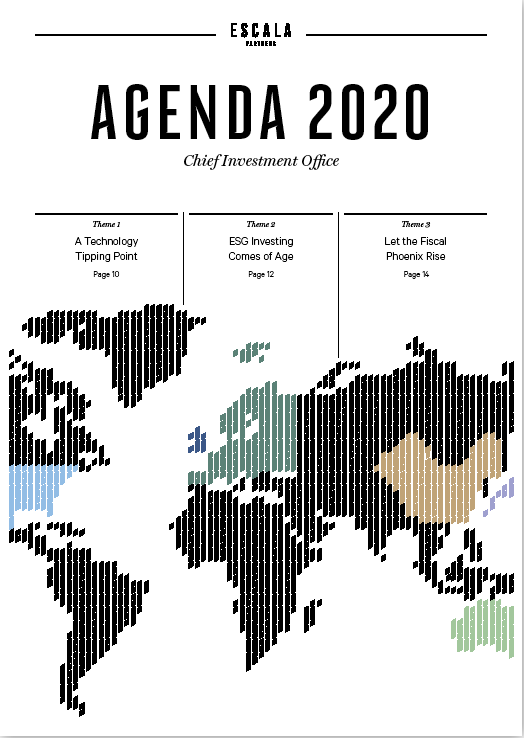-
Overview
Liz Harrison
Investment Analyst – Fixed IncomeIn 2019, total US corporate debt rose to nearly $10 trillion, a record 47% of the overall economy.
Fixed income assets had a strong year in 2019. Bond yields tumbled and credit spreads tightened in response to the dovish pivot by the US Federal Reserve and rate cuts by global central banks including Australia. While remaining accommodative, the extent of monetary policy easing is unlikely to be repeated this year, and the outlook is for more modest returns for fixed income in 2020.
Within developed markets, short term interest rates will stay anchored by low official cash rates which are predicted to be ‘lower for longer’. Longer term yields may rise in Europe and the US as growth lifts, aided by an easing of trade tensions, but benign inflation and ongoing unconventional monetary policy will cap yields. We expect US 10-year yields to trade between 1.5–2.5% – consistent with a real yield of around 1%, an inflation target of 2% and a term premium that has turned slightly negative in recent years. As a floor, last year’s low of 1.45% will be a difficult technical level to break through. Bond managers will add alpha by trading the range and collecting the coupon, but significant capital appreciation is doubtful. Emerging Markets (EM) have scope to reduce interest rates further, and any deterioration in the US dollar will favour local currency bond performance.
Australia is potentially the outlier in developed markets. Weakening economic conditions put pressure on the Reserve Bank to ease further. Bond prices will rally (yields will move lower) if more than one rate cut is required. This likely results in a divergence between domestic and US bond rates, with the Australian rates market more likely to outperform its global peers in 2020.
Corporate credit spreads are narrow (the tightest since 2007), and corporate bonds are unlikely to get the tailwind from further contraction. At the same time, we do not expect spreads to widen from here. Investment grade and high yield sectors will be supported by strong fundamentals, low default rates, accommodative policies and the ‘lower-for-longer’ thematic keeping investors focussed on the search for yield. Coupon income will be the main source of return in 2020.
Global Bond Yields (%)

Source: Bloomberg
The average policy rate among emerging market economies has fallen to a record low of 4.6% (GDP weighted). The average policy rate among developed market economies sits 0.5% above its 2015 low thanks to the four interest rate hikes by the US Federal Reserve in 2018.
Green Bond Issuance (USD Billion)

Source: Climate Bond Initiative
Issuance of green bonds (corporate issuance used to fund sustainability-based initiatives) rose above US$200 billion in 2019, exceeding expectations. This growth is expected to continue with Climate Bond Initiative estimating US$330 billion worth of new issuance in 2020. Europe is likely to remain the biggest issuer of any region, with China and the US leading the way for a single country. The trend for corporates to issue green bonds is expected to be ongoing given the success of a $2 billion bond issue from Apple late last year. The cost of funding is attractive for participants with new deals often oversubscribed. Liquidity in secondary markets should be aided by issuance growth of the sector, larger bond sizes and diversity of issuers. These are positive developments for investors with an appetite for sustainable investments.
Australian Investment Grade Credit Spreads (iTraxx Index)

Source: Bloomberg
Spread premium on investment grade credit nearly halved in 2019, with the Australian iTraxx Index falling from 95bp to 49bp. In addition to clipping the coupon, security selection and market timing (trading the range) will be critical for credit managers to deliver decent returns in this tight spread environment.






